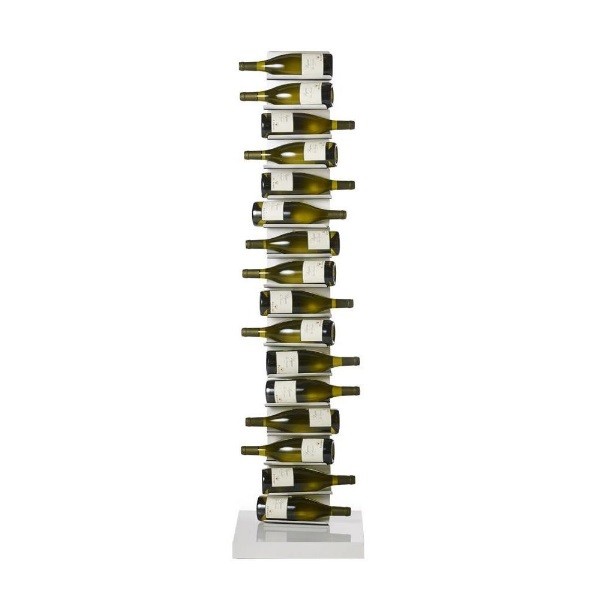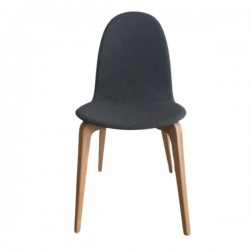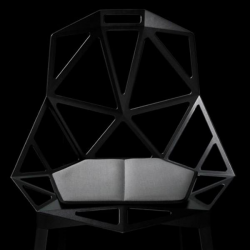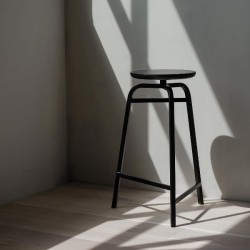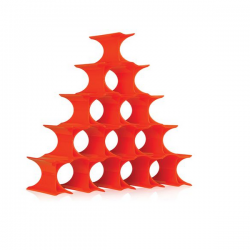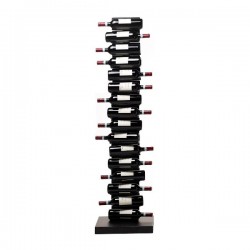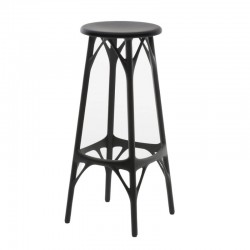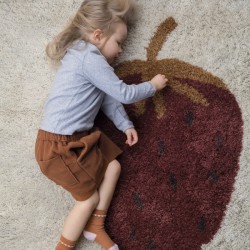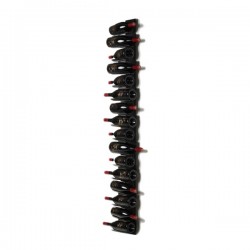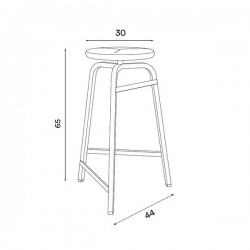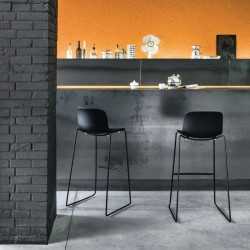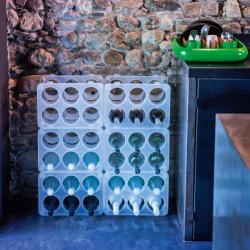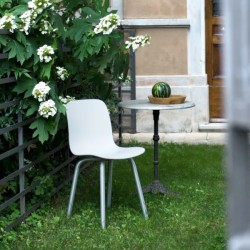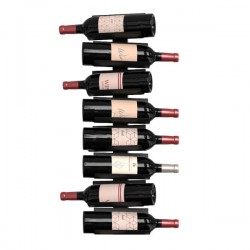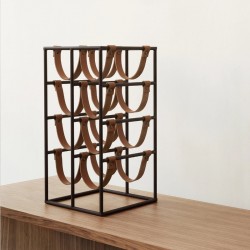Ptolomeo Vino, absolute novelty of the 2018 Salone del Mobile, is the bottle holder version of Original Ptolomeo, the famous free standing bookshelves designed by Bruno Rainaldi, winner of the Compasso d’Oro 2004 and soon became an icon of contemporary design. A glass of our favourite wine and that book that we are engrossed in.
Very often our moments of greatest relax are imagined in the company of a good book and an excellent glass of wine. Ptolomeo Vino becomes the “summa” of this suggestive idea, representing the transformation of the famous Original Ptolomeo bookshelf into a scenographic bottle holder
In Ptolomeo Vino the container once again stands aside allowing the limelight to go to its content. The wine bottles are the main protagonists, appearing to float in the air, their labels becoming a strongly decorative feature.
Conceived on the drafts left by Bruno Rainaldi, Ptolomeo Vino is a metal column connected to a system of ledges that can contain a great variety of different wine bottles. The supports have been designed to be as imperceptible as possible, to give the beholder the idea that the bottles are “suspended”.
Slim, elegant and essential, it is the perfect solution for both domestic environments and the contract world, including hotels, restaurants, wineries, wine shops and wherever wine is more than just a passion. Also available in a wall version (that if possible enhances even more its scenographic effect), Ptolomeo Vino can be made in three different sizes and in four different finishes, from pure white to shiny stainless steel, from the traditional black to an antique Corten effect.
lacquered white RAL 9016. This model has some small damages. Hardly visible.
-
Bruno Rainaldi
Bruno Rainaldi was formed on the field, starting at a young age to work with interior design communication. With irony he described himself as a “street designer” and his style as “chaotically rigorous”. In Milan he directs the first High-tech at Corso di Porta Ticinese. He supports Maddalena De Padova in the storic showroom of corso Venezia, later Enrico Baleri as partner of Baleri & Associati, with communication strategies for companies and designstores. Founds Studio Rari - in which he is the soul and the creative director - and beguins his first collaborations as creative director/designer with several italian design companies as Alivar, MDF, Mussi Italy, Sintesi. Then Terzani, Slamp, Casprini, Annibale Colombo, Bilumen, Davide Medri e Dilmos. Until the recent project Opinion Ciatti, born from the important artistic- and business-partnership with Lapo Ciatti. In the mid-eighties, Bruno Rainaldi meets Flavia Ciatti. From their friendship/comparison the idea of a new company comes to life - CCR - aimed at developing furniture and accessories for the home, not only for the kitchen. The brand CCR gives birth to important pieces of industrial design. In 2006, Lapo Ciatti, who represents the third generation, enters in the company with the family’s entrepreneurial instinct and with training in industrial design. New comparisons and new opinions. Opinion Ciatti is born of which Bruno Rainaldi is president, partner and artistic director. With a deep market knowledge, a great passion for arts and a precious talent for transverse associations matured over the years, Bruno Rainaldi alloy definitly his professionality in the design world. In 2002, together with Marta Giardini, he opens Entratalibera, a very special space in Milan where he exposes his own works and a selection of objects. A “laboratory of shapes”, open towards research and experimentation. Bruno Rainaldi designed bookshelves, tables, chairs, sofas, armchairs, beds, accessories and lightning. A universe of intense and iconic objects without consistency in style, rather the real sense of industrial design: to produce the right object for the right use. What holds them together it is the essentially of the design, the freedom of use, the compositional versatility.


 EUR
EUR

